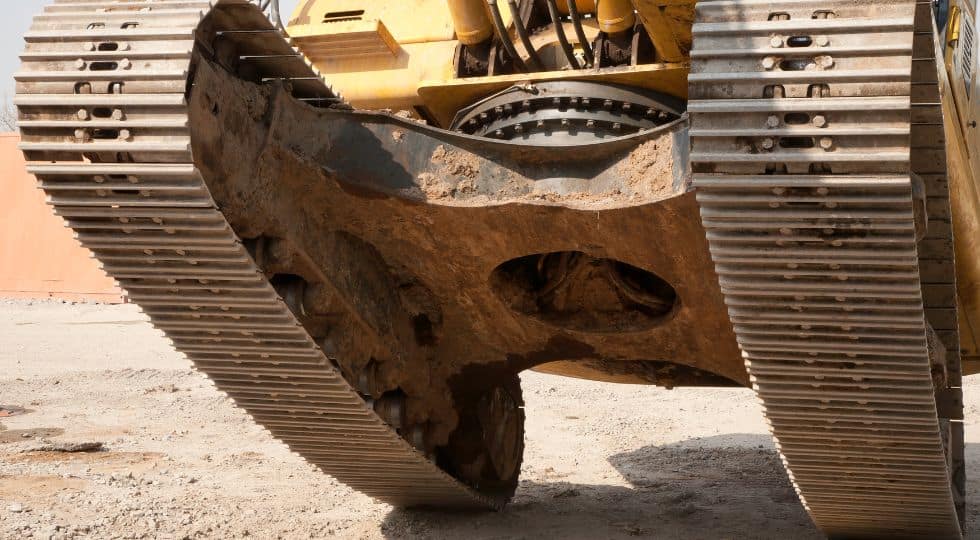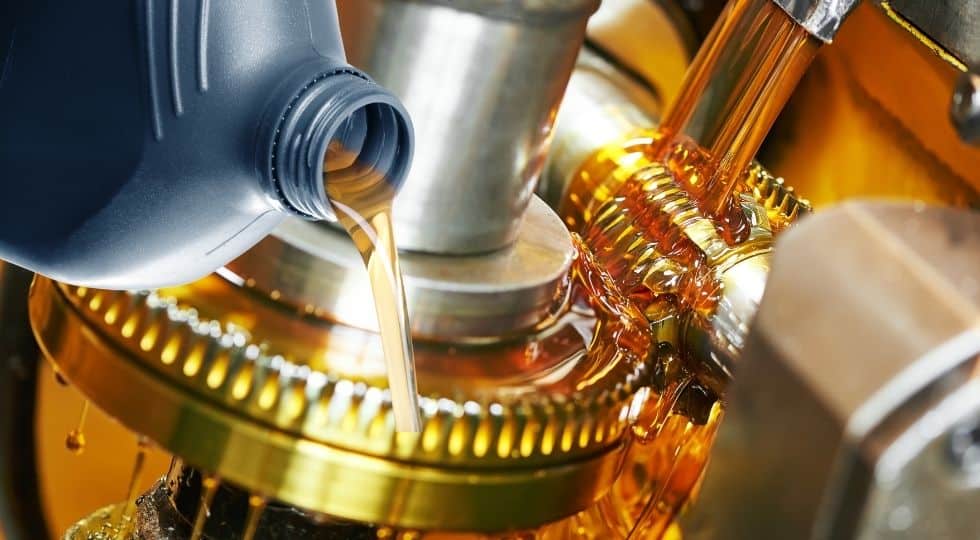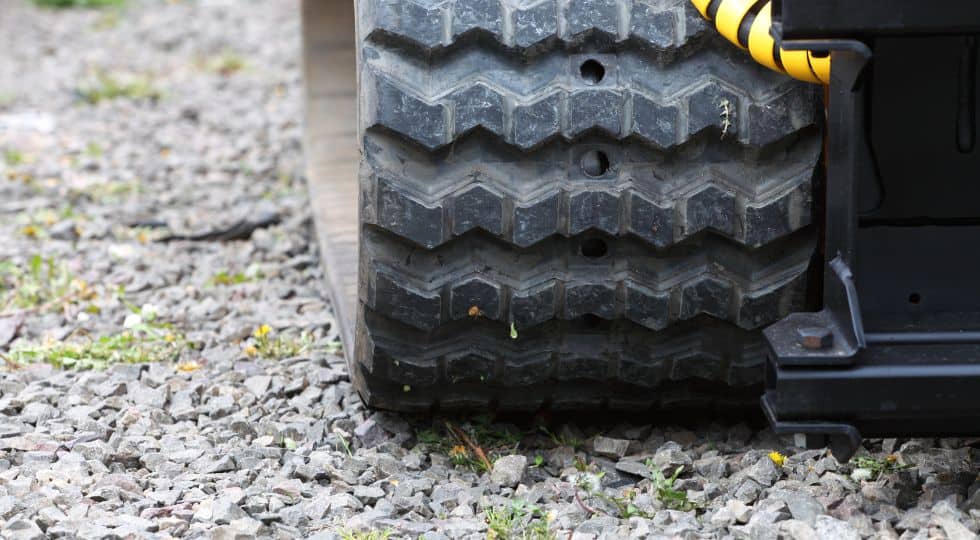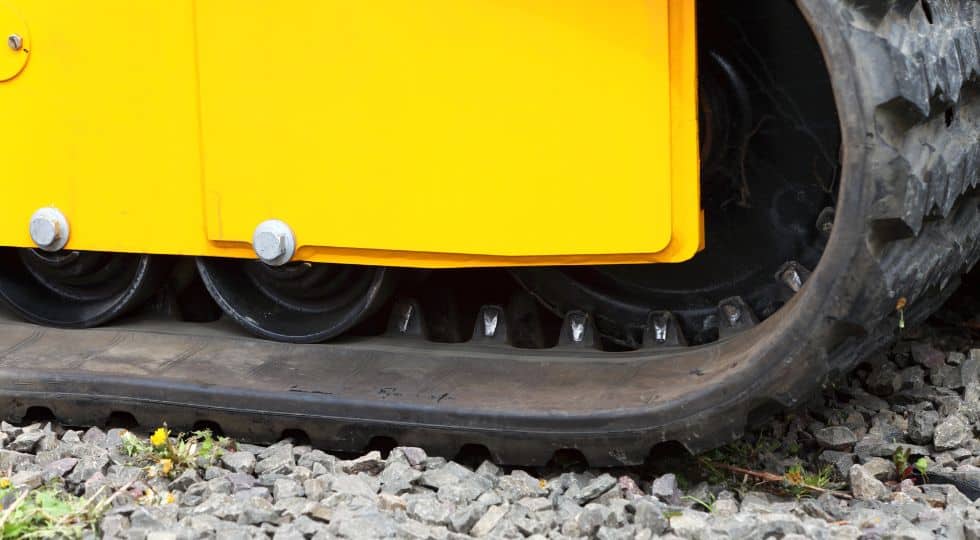Mini Excavator tracks must be maintained regularly to work at their best and avoid premature wear. Keep reading to learn How to maintain excavator tracks for optimal performance? One of the most effective ways to maintain the undercarriage is to remove accumulated dirt, pebbles, and debris. If this task is neglected, it could result in unused wear and strain and expensive repairs.
Pressure washers are recommended to clean the undercarriage thoroughly, as they can effectively remove dirt and grime that may be difficult to reach. By prioritizing regular cleaning and inspection of your excavator tracks and undercarriage, you can extend the lifespan of your equipment and ensure optimal performance in the field.
Maintain excavator tracks for optimal performance.
Regular Cleaning:
Regular cleaning of the undercarriage of your excavator tracks is crucial for maintaining optimal performance and prolonging the life of your equipment. Dirt, mud, and other debris can accumulate in the undercarriage and cause damage, reducing the efficiency and effectiveness of the machine. To clean the undercarriage, use a high-pressure washer with a narrow spray nozzle to remove dirt and debris from hard-to-reach areas.
Start from the top and work your way down, paying attention to areas around the rollers, idlers, and sprockets. Removing all debris from the undercarriage is essential, as even tiny particles can cause damage and wear over time. Make careful to clean out any waste from the grooves between the tracks and the area around the rubber tracks.
Regular cleaning of the undercarriage can also help prevent corrosion and rust, which can weaken the metal components over time. After cleaning, inspect the undercarriage for any signs of damage or wear, and address any issues promptly to avoid further damage and costly repairs.
By incorporating regular cleaning into your maintenance routine, you can keep your excavator tracks performing at their best and avoid unnecessary downtime due to equipment failure.
Routinely Inspect the Undercarriage
Routinely inspecting the undercarriage of your excavator tracks is crucial for identifying any signs of damage or wear before they become more severe and lead to costly repairs or downtime.
Inspect the rubber tracks for any cuts, cracks, or tears. Any damage to the rubber tracks can quickly worsen, leading to a loss of traction and decreased performance. Replace any damaged or worn tracks promptly to avoid further damage to the undercarriage. Next, inspect the rollers, idlers, and sprockets for any signs of wear.

Check for worn or broken teeth on the sprockets and any looseness in the rollers or idlers. Excessive wear or damage to these components can cause the tracks to derail or wear out more quickly. Inspect the bolts and nuts that hold the undercarriage components together, ensuring they are tight and secure. Loose bolts and nuts can cause the undercarriage to shift, which can cause damage to the tracks and other components.
At last, check the track tension to ensure it meets the manufacturer’s recommended specifications. Improper track tension can cause accelerated wear on the tracks, sprockets, and idlers. Make any necessary adjustments to the tension to ensure optimal performance and longevity of the undercarriage.
You can catch any issues early and address them before they become more severe, reducing the risk of downtime and costly repairs.
Keep the Track Tension Correct:
Keeping the track tension correct is essential for maintaining the performance and longevity of the undercarriage on your excavator tracks. Improper track tension can cause accelerated wear and tear on the tracks, sprockets, and idlers, reducing efficiency, increasing fuel consumption, and causing costly repairs. To check the track tension:

- Please turn off the excavator’s motor and position it on a flat surface.
- Measure the sag in the tracks by pushing down on the center of the track with a force of about 22 pounds (10 kilograms) and measuring the distance between the bottom of the track and the top of the grouser.
- Check the manufacturer’s specifications for the recommended sag for your machine and make any necessary adjustments to the track tension.
Too much sag can cause excessive wear on the tracks and sprockets, while too slight sag can cause the tracks to derail or wear out more quickly. Adjust the track tension by adjusting the tensioner bolts or hydraulic cylinders according to the manufacturer’s guidelines.
Make sure to tighten any bolts and nuts to the correct torque specifications. Regularly checking and adjusting the track tension can help maintain the performance and longevity of the undercarriage on your excavator tracks, reducing the risk of downtime and costly repairs.
Use the Correct Lubrication:
Using the correct lubrication for the undercarriage components on your excavator tracks is crucial for ensuring optimal performance and longevity of the equipment. The undercarriage components, such as the rollers, idlers, and sprockets, are subject to extreme conditions and require proper lubrication to operate efficiently and avoid premature wear and tear.

First, refer to the manufacturer’s guidelines to determine the type of lubrication and the recommended intervals for application. Different types of lubricants may be required for different components, so following the manufacturer’s recommendations is essential.
When applying lubrication, ensure that the lubricant is distributed evenly to all undercarriage components, including the rollers, idlers, and sprockets. Applying insufficient or excessive oil can lead to problems, so stick to the manufacturer’s suggested amount. Check the undercarriage parts frequently for any indications of wear or harm. Any problems should be resolved immediately to stop the equipment from suffering additional harm.
Proper lubrication of the undercarriage components can help reduce friction and wear, leading to better performance, increased fuel efficiency, and extended equipment life. By following the manufacturer’s guidelines and regularly inspecting and lubricating the undercarriage components, you can help ensure your excavator tracks operate at their best.
Select the correct shoe width.
Selecting the correct shoe width is essential in maintaining the undercarriage of your excavator tracks. The width of the shoe affects the amount of ground pressure the excavator puts on the tracks and the ground, which can impact the wear and tear on the undercarriage components.

Consider the type of terrain and the tasks you will be performing with the excavator when selecting the shoe width. For example, a wider shoe may be better suited for softer or looser terrain, while a narrower shoe may be more suitable for more complex or compact ground.
Consult the manufacturer’s recommendations for the optimal shoe width for your specific excavator model. The recommended shoe width is often based on the weight of the machine and the type of work it is designed to perform.
Ensure the shoe width is consistent across all tracks to avoid uneven wear and tear on the undercarriage components. Uneven wear can cause the tracks to become misaligned, resulting in poor performance and increased fuel consumption.
Selecting the correct shoe width for your excavator tracks can help reduce the risk of premature wear and tear on the undercarriage components, leading to better performance, increased fuel efficiency, and extended equipment life.
Consider Rubber excavator Tracks for Sensitive Surfaces
If you frequently operate your excavator on sensitive surfaces, such as asphalt, concrete, or tile, consider using rubber tracks instead of steel tracks. Rubber tracks offer several benefits for sensitive surfaces, including reduced noise, decreased vibration, and reduced damage to the surface. Rubber tracks can also improve traction on slippery surfaces, making them a good choice for wet or icy conditions.

Rubber tracks tend to be more flexible than steel tracks, which can help absorb shocks and impacts from rough terrain, reducing the strain on the undercarriage components. When selecting rubber tracks for your excavator, consider the manufacturer’s recommendations for the optimal track width and thickness for your specific machine. The type of work you will be performing and the terrain you will be working on should also be considered.
It’s important to note that rubber tracks may not be as durable as steel tracks and require more frequent replacement. However, the benefits of using rubber tracks for sensitive surfaces can help reduce the risk of damage to the surface and improve the performance and longevity of your equipment.
Adhere to Proper Digging Procedures
Adhering to proper digging procedures is crucial in maintaining the undercarriage of your excavator tracks. Proper digging procedures can help reduce stress and wear on the undercarriage components, leading to improved performance and longer equipment life. First, ensure the excavation site is properly prepared and free of any hazards, such as rocks or debris, that could damage the undercarriage components.

Check the site for underground utilities or obstructions that may interfere with the digging process. Next, position the excavator tracks in a stable and level position before digging. Use the excavator’s boom and arm to slowly and carefully remove soil or other materials from the excavation site. Avoid overloading the bucket, as this can cause unnecessary strain on the undercarriage components.
When digging on slopes or uneven terrain, use caution and ensure the excavator is stable. Avoid excessive tilting or side-to-side movements, as these can cause uneven wear and tear on the tracks and undercarriage components. After completing the digging task, clean the undercarriage thoroughly to remove any debris or materials that may have accumulated during the excavation process. It will help prevent debris from causing damage to the undercarriage components and ensure optimal performance. By following proper digging procedures, you can help reduce the risk of premature wear and tear on the undercarriage components of your excavator tracks.
Bottom line
With proper care and maintenance, your excavator tracks perform very well. The lifespan of the excavator track will also increase. We are here to help you if you need more information, so contact us now.

